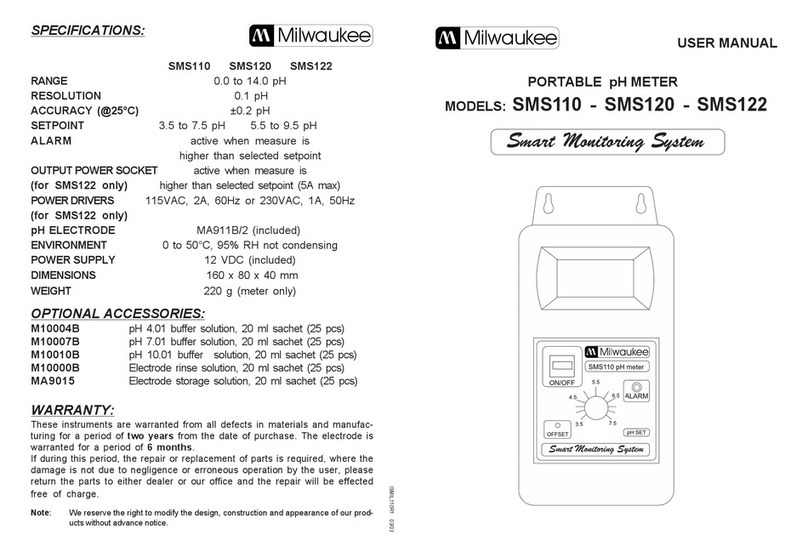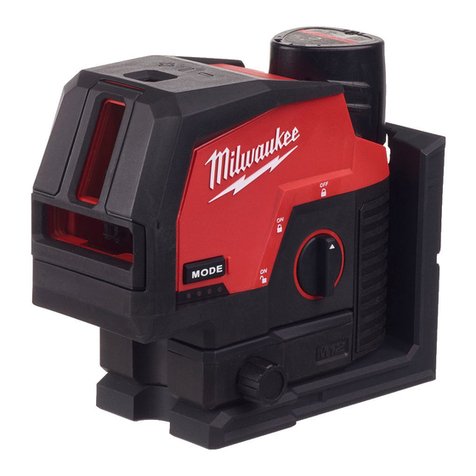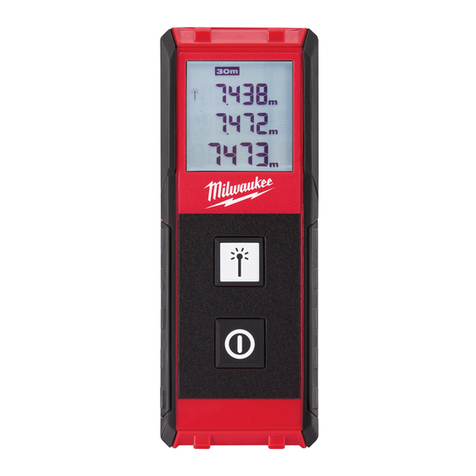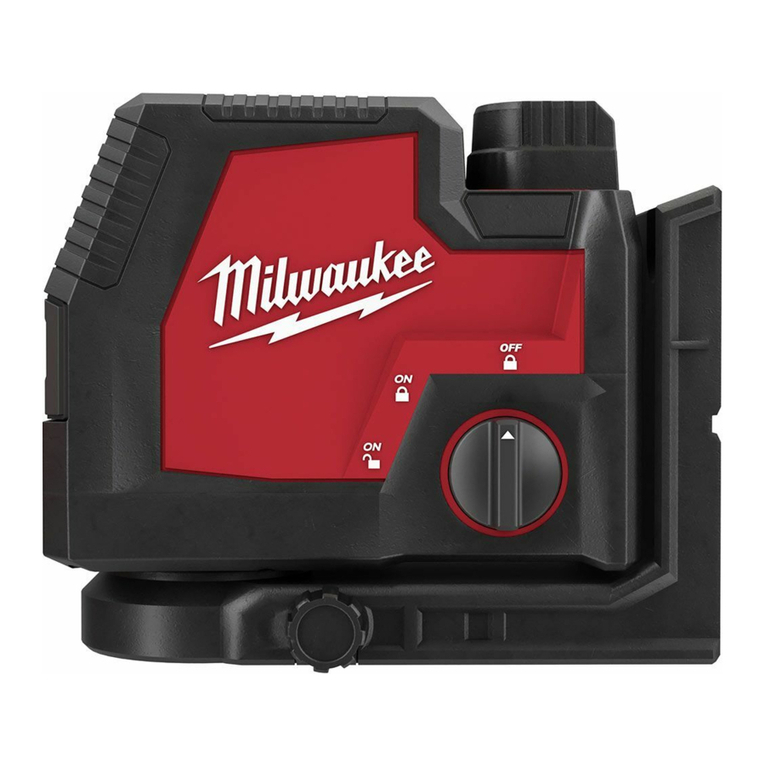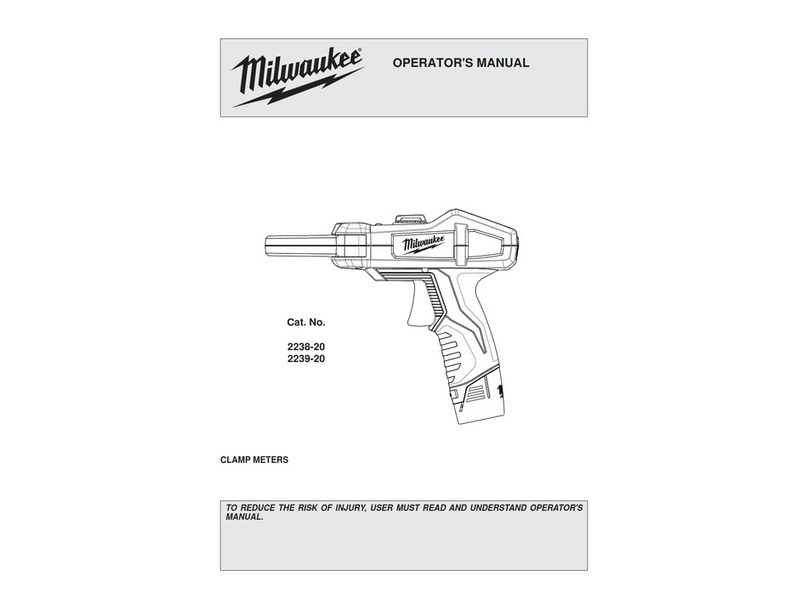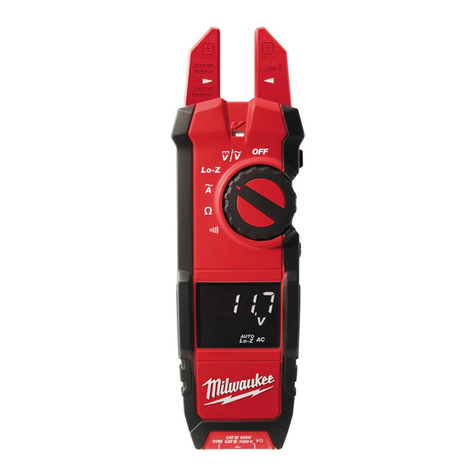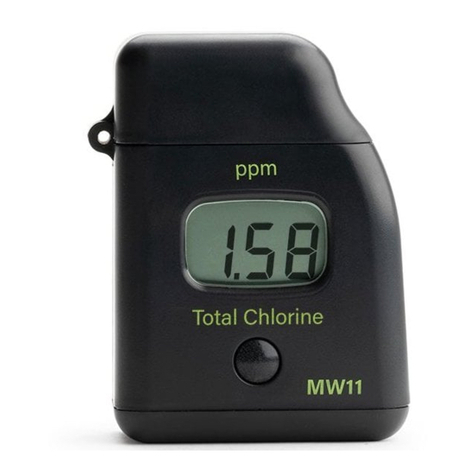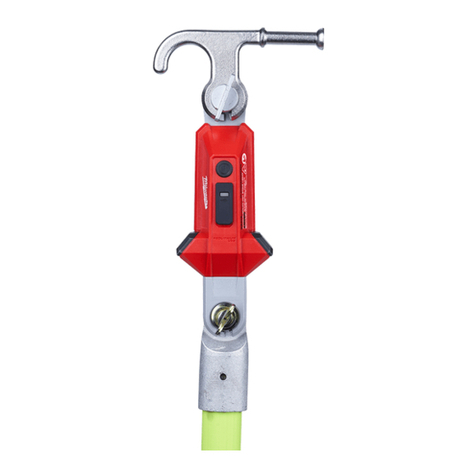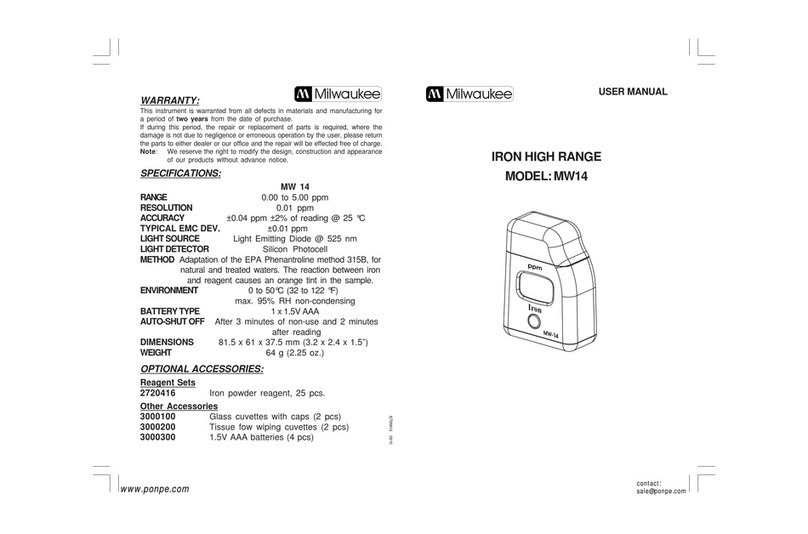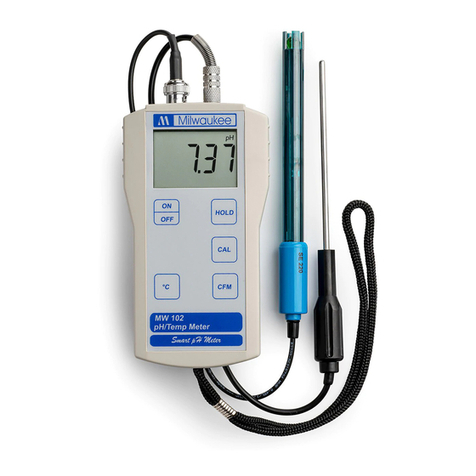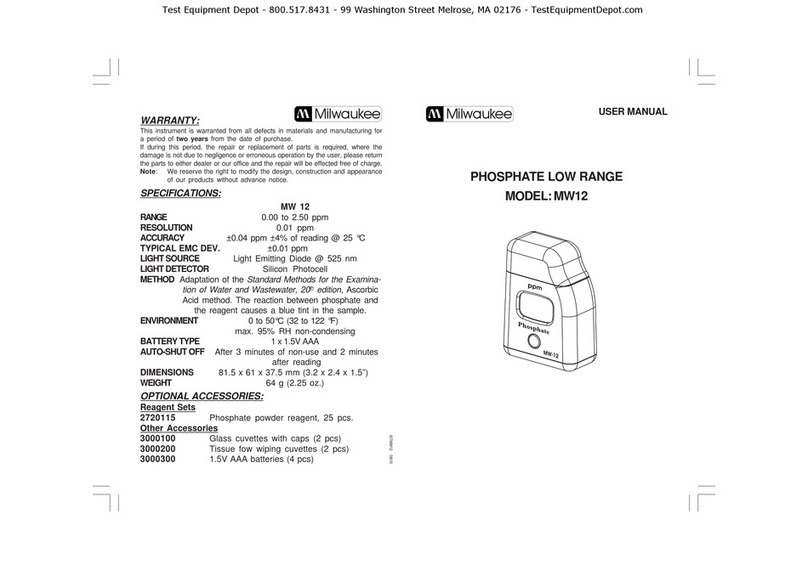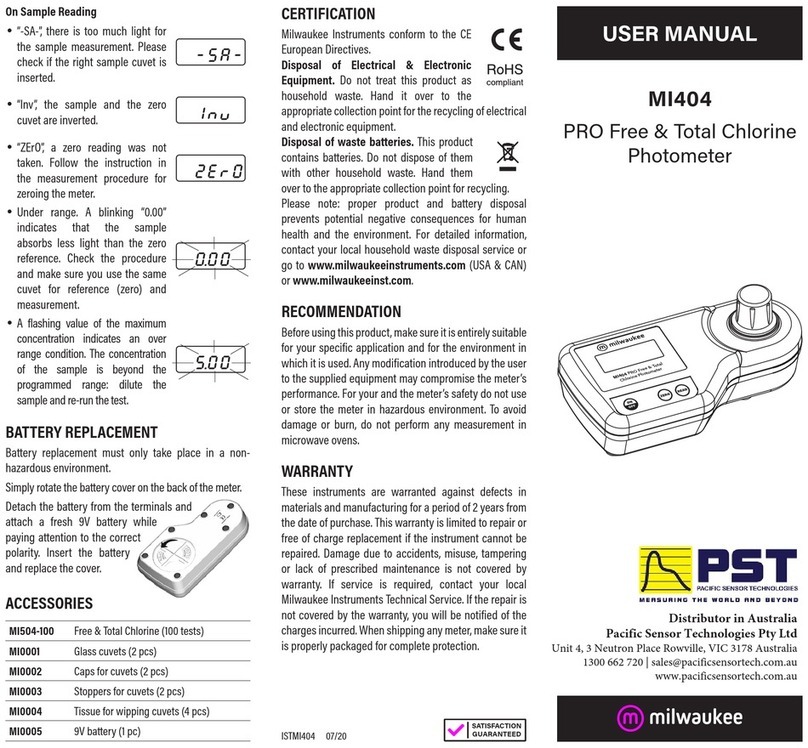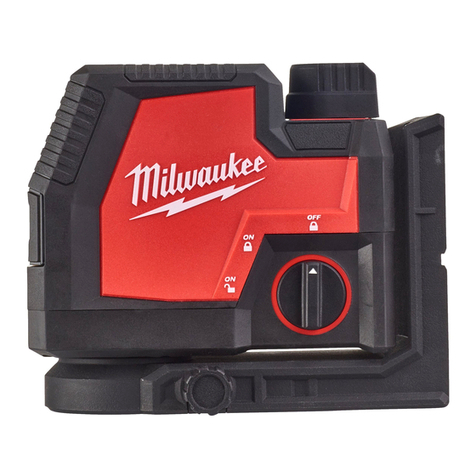
2
GENERAL POWER TOOL
SAFETY WARNINGS
WARNING
Read and understand all instruc-
tions. Failure to follow all instructions
serious personal injury. Save all warnings and in-
structions for future reference.
LASER SAFETY
•Save these instructions - This operator's manual
contains important safety and operating instructions.
tool.
WARNING
The device produces visible laser
beams, which are emitted from the
PERSONAL SAFETY
•
•Laser light - Do not stare into beam or view
directly with optical instruments. Do not point
laser light at others. Laser light can cause eye
damage.
BATTERY TOOL USE AND CARE
•Do not allow persons unfamiliar with the tool,
these safety instructions, and the tool's opera-
tor's manual to operate the tool. This tool can be
dangerous in the hands of untrained users.
•Do not overreach. Keep proper footing and
balance at all times. This enables better control
of the tool in unexpected situations.
SPECIFIC SAFETY RULES FOR
LASER LEVELS
•
•
manufacturer. A charger that is suitable for one type
with another battery pack.
battery packs. Use of any other battery packs may
•When battery pack is not in use, keep it away
from other metal objects, like paper clips, coins,
keys, nails, screws or other small metal objects,
that can make a connection from one terminal
to another. Shorting the battery terminals together
•Under abusive conditions, liquid may be ejected
from the battery; avoid contact. If contact ac-
cidentally occurs, flush with water. If liquid
contacts eyes, additionally seek medical help.
Liquid ejected from the battery may cause irritation
or burns.
•
•Follow all charging instructions and do not charge
the battery pack or tool outside the temperature
Charging
range may damage the battery and increase the risk
•Store your battery and tool in a cool, dry place. Do
not store battery where temperatures may exceed
50°C (120°F) such as in direct sunlight, a vehicle
or metal building during the summer.
WARNING
Do not dispose of tool or batteries together with
household waste material! Tool and batteries that
have reached the end of their life must be collected
separately and returned to an environmentally
compatible recycling facility.
Ensure tool magnets are securely mounted to
a metal surface. Magnet strength may not hold
on thin metal surfaces, causing the tool to fall.
CAUTION
•
•
•If using with a lanyard, do not exceed maximum
capacity marked on the lanyard label. Always de-
termine the weight of the product, with all accesso-
ries, when selecting the appropriate lanyard system.
Exceeding maximum capacity may result in serious
•For best results, use with energy absorbing
lanyards. Ropes, straps or chains may break and
cause failure. Do not use with lanyards at full tension.
•
•The device conforms to the most stringent
requirements of the relevant Electromagnetic
Compatibility (EMC) Standards and Regulations.
Yet, the possibility of causing interference in other
devices cannot be totally excluded.
This device complies with AS/NZS 60825.1,
Class 2 Laser.
Do not expose a battery pack or tool to fire or
excessive temperature. Exposure to fire or
temperature above 130°C (265°F) may cause
explosion.
Do not use a battery pack or tool that is
damaged or modified. Damaged or modified
batteries may exhibit unpredictable behavior
resulting in fire, explosion or risk of injury.
Maintain labels and nameplates. These carry
important information. If unreadable or missing,
contact MILWAUKEE®for a replacement.
Always use common sense and be cautious
when using tools. It is not possible to anticipate
every situation that could result in a dangerous
outcome. Do not use this tool if you do not
understand these operating instructions or you feel
the work is beyond your capability; contact
MILWAUKEE®Tool or a trained professional for
additional information or training.
To reduce the risk of injury,
when working in dusty
situations, wear appropriate respiratory
protection or use a suitable dust extraction
solution.
Use of controls or adjustments
or performance of procedures
other than those specified herein may result in
hazardous radiation exposure.
Be sure to power off instrument after use.
When instrument will not be used for a long period,
place it in storage after removing batteries.
ADDITIONAL BATTERY SAFETY RULES
WARNING
WARNING
To reduce the risk of fire, personal
injury, and product damage due to
a short circuit, never immerse your tool, battery
pack or charger in fluid or allow a fluid to flow inside
them. Corrosive or conductive fluids, such as
seawater, certain industrial chemicals, and bleach
or bleach-containing products, etc., can cause a
short circuit.
Do not charge non-rechargeable
batteries.
